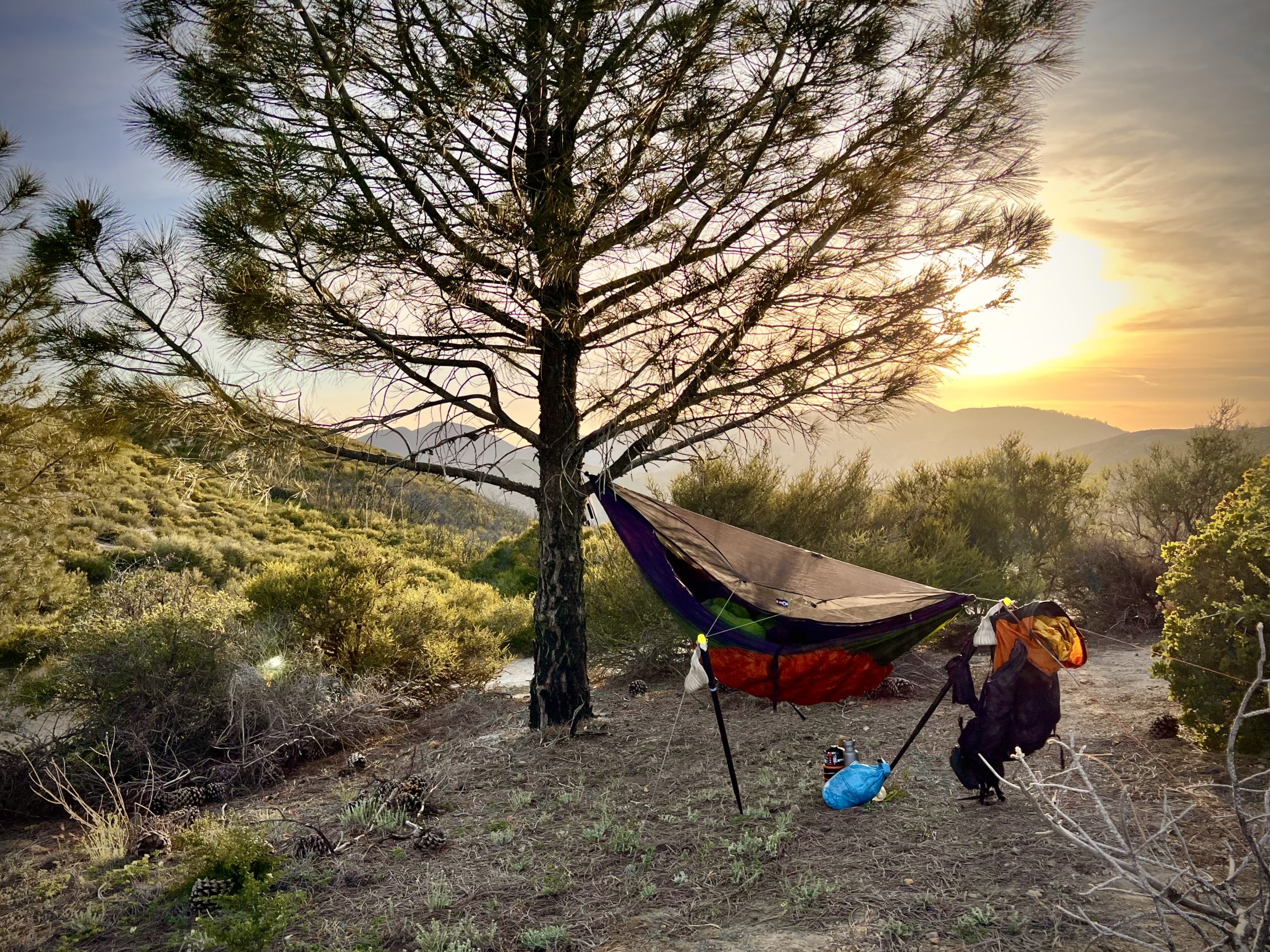
I have now reached Kennedy Meadows South, mile 702 of the Pacific Crest Trail, thus ending the desert segment and beginning the Sierra Nevada. I have not once slept on the ground so far thanks to my Warbonnet Blackbird XLC hammock and Tensa Trekking Treez as my sole sleeping arrangement. Mission accomplished!
I have needed to use one or both Treez 20 nights thus far, out of 58 nights total, so about a third. Below is a gallery of all 20 of those hangs. Because it is faster and more convenient to hang from trees, other poles, or rock features than from Trekking Treez, I used TT only when there were no reasonable alternatives. I could have used TT 100% of nights if that were my goal. As trees are more reliably available at points north, I expect to use the poles in hammock mode going forward less frequently.
Even though trees are available below treeline in the Sierra ahead, camping below treeline will not always be desirable, because safety and speed calls for crossing the high passes early in the mornings when the remaining snow is harder. Tomorrow I will set out with 12 days of food aiming to reach Vermilion Valley Ranch without descending below 10,000’ to resupply. I plan to hang from the poles above treeline amid the rocks to speed my way. This should make for some epic photos at the very least.
Another reason I will keep using the poles ahead is that they are much stronger as trekking poles than ordinary ones. While they absolutely do not replace an ice axe where necessary, I feel much more confident using Trekking Treez for stability in deep snow or boulder fields, that commonly cause ordinary lighter poles to break. The trail and hiker boxes along the way are fairly littered with snapped and bent poles. I have salvaged still-new carbide tips from these abandoned poles twice already, as I have worn through the originals.
I began this hike with a small amount of anxiety about whether TT would always work for me, given the unknown ground conditions of the desert segment. These feelings are now completely gone. Ground sleepers often stop hiking earlier in the day than they want, solely because they lack confidence of finding suitable flat, clear tent sites ahead before dark. I always hike as long as I want, knowing I can figure something out almost anywhere, whether the ground is sloped or flat, rocky or soft, and of course whether trees are present. This to me is liberating, and speeds my progress.
Of course, the greatest support to my speed and comfort on trail is the consistently restorative sleep and day lounging the hammock provides. Sleeping with feet slightly elevated is fantastic for recovery, aiding venous return from overworked legs better than the compression hosiery and pack-under-legs strategies ground sleepers often use.
In reality, a bigger issue than lack of trees for using a hammock exclusively on the PCT is the wind. While using a tent in high winds isn’t pleasant either, suffice to say it’s very good that I don’t get seasick. Guying the sides of the hammock out to ground minimizes but does not eliminate the sway. One night a stiff cross wind spinnakered me in the hammock to perhaps 30° off plumb several times. Using a tarp for wind protection can add a little warmth and stability, but at the expense of a deafening roar beyond earplugs’ ability to make soft, and the tarp’s guylines must be very strongly anchored to resist the blast.
Wind passing under the hammock draws away heat that ground sleepers retain for a given amount of insulation. When winds are up, I find using an underquilt protector essential to staying warm even when the overnight low is 25°F higher than the rating of my quilts. Equipped with 20°F quilts and protector, I was always warm enough even on the six nights I woke to ice in my water bottles.
I’m pleased to report that regardless of wind or other challenges, never once did the system collapse to drop me in the night. It is also true that my initial anchor placements failed maybe a dozen times in total during setup and testing. Proving the anchors with some hard bouncy test sits is an important part of setup. In the worst case, in an immense burn zone with dead loose soil, I had to re-set 2 of 4 anchors 3 times over half an hour before I could rest confident that they’d hold the night.

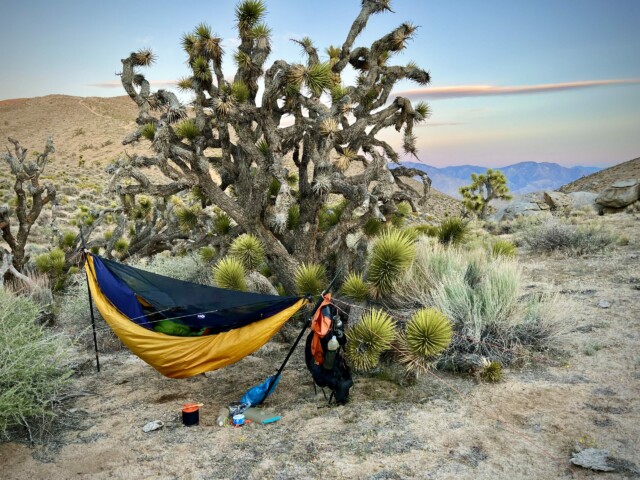
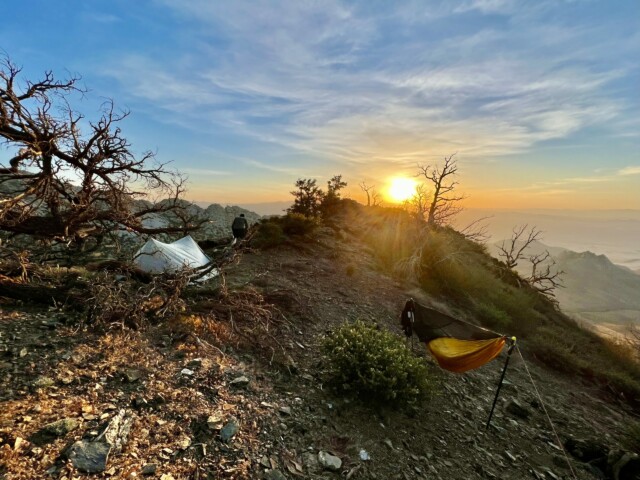
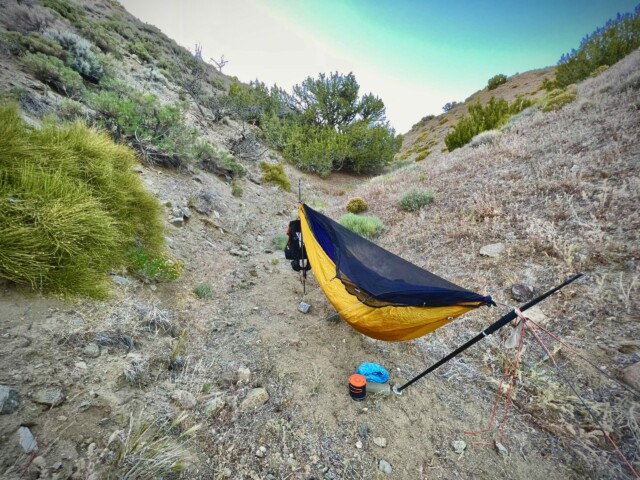
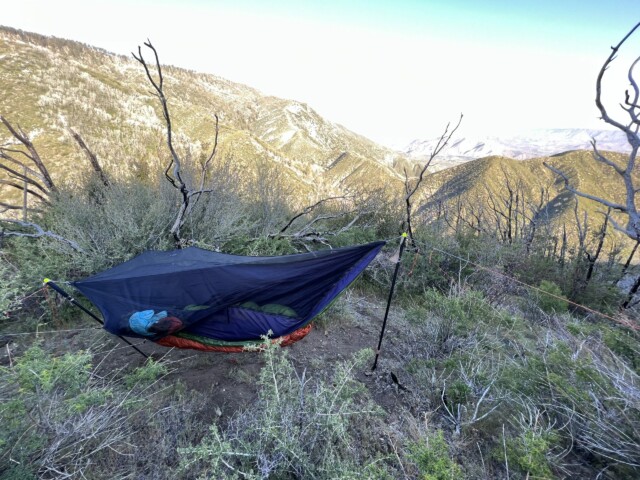
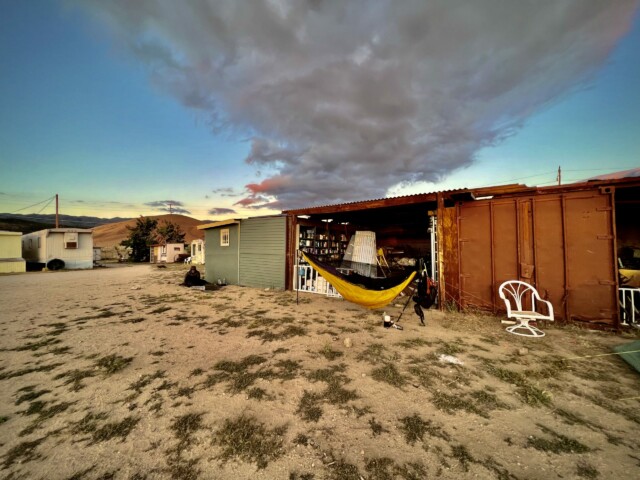
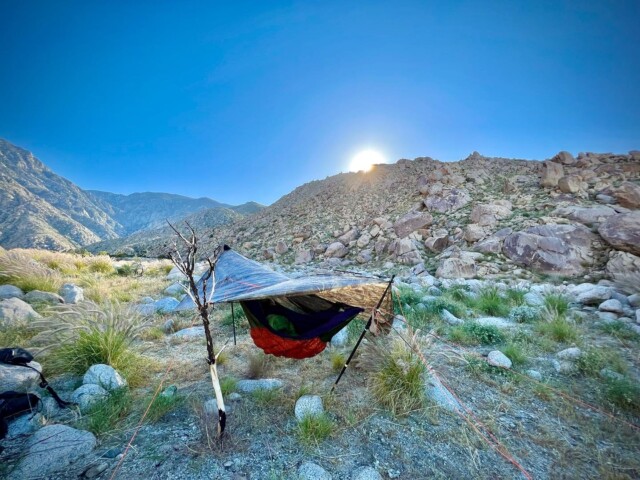



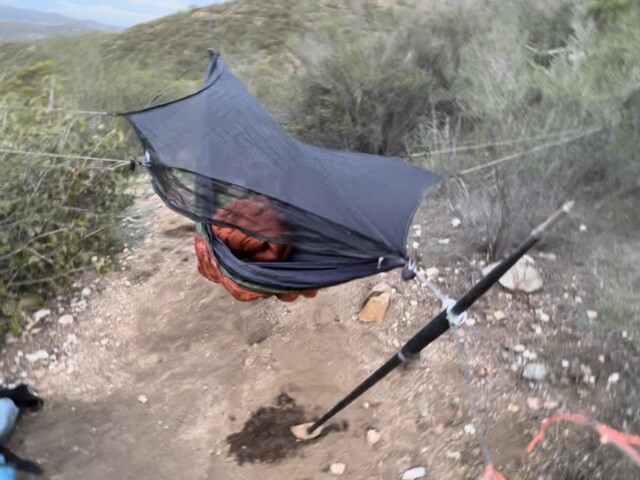




From what you said, it sounds like you are setting up with the tarp/hammock broadside to the wind. Have you tried setting up parallel to the wind – maybe with the tarp angled a little down facing the wind.
I know the wind can change direction, but it is mostly steady, setting up parallel might minimize the chance of being spinnakered.
Anchoring and slope considerations often trump orientation.